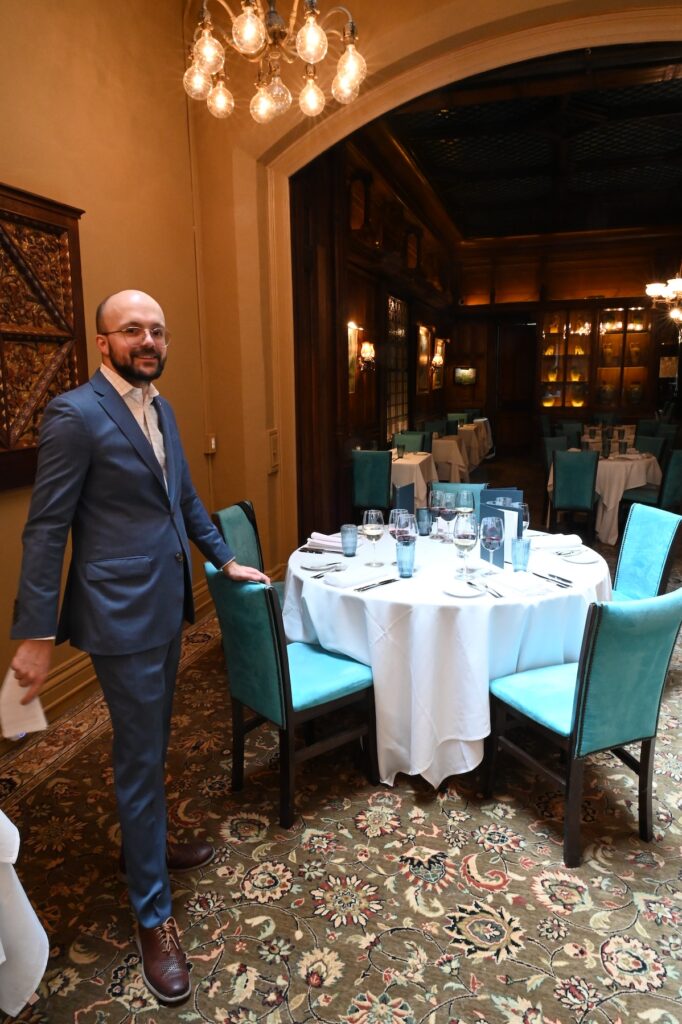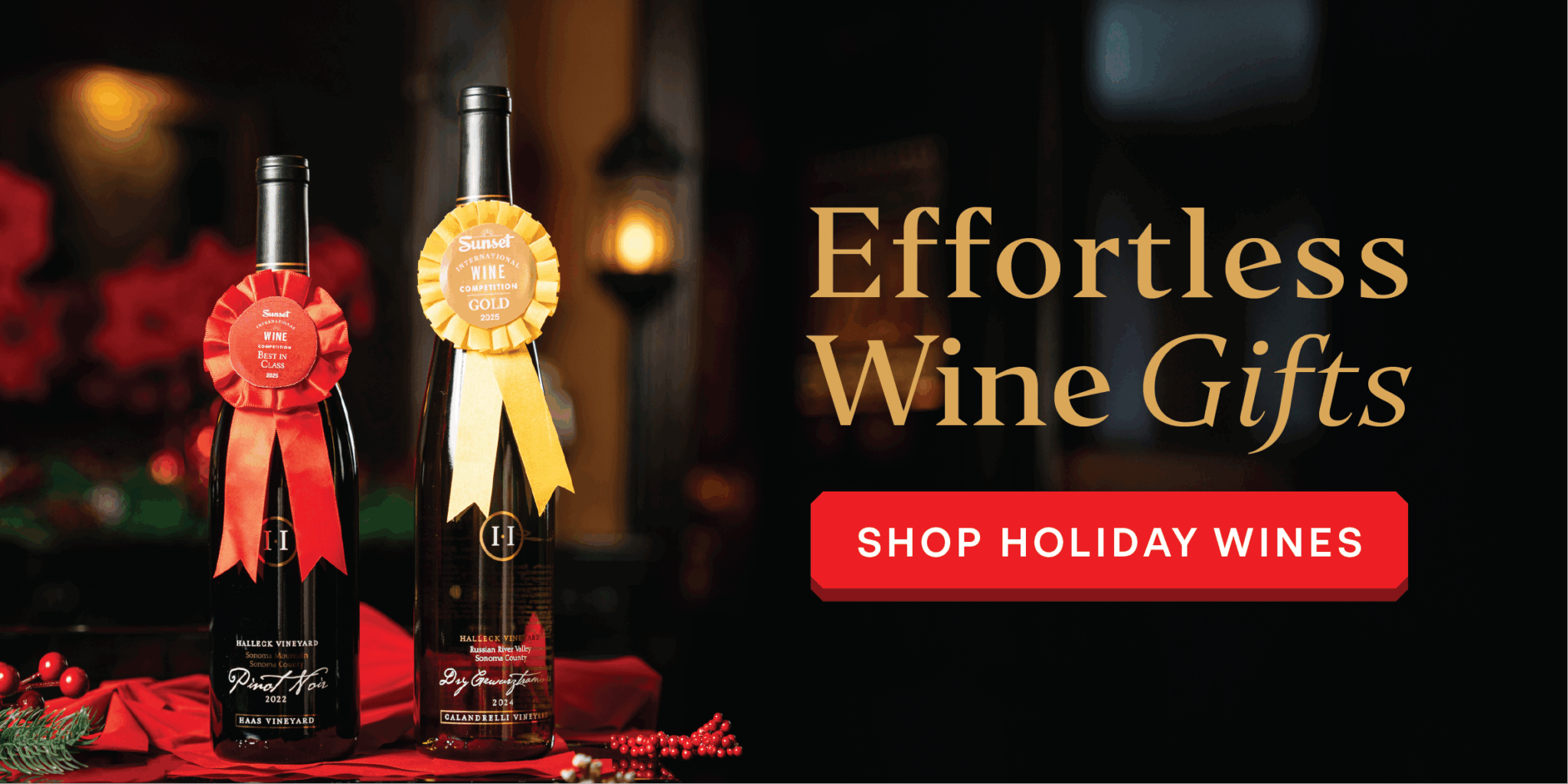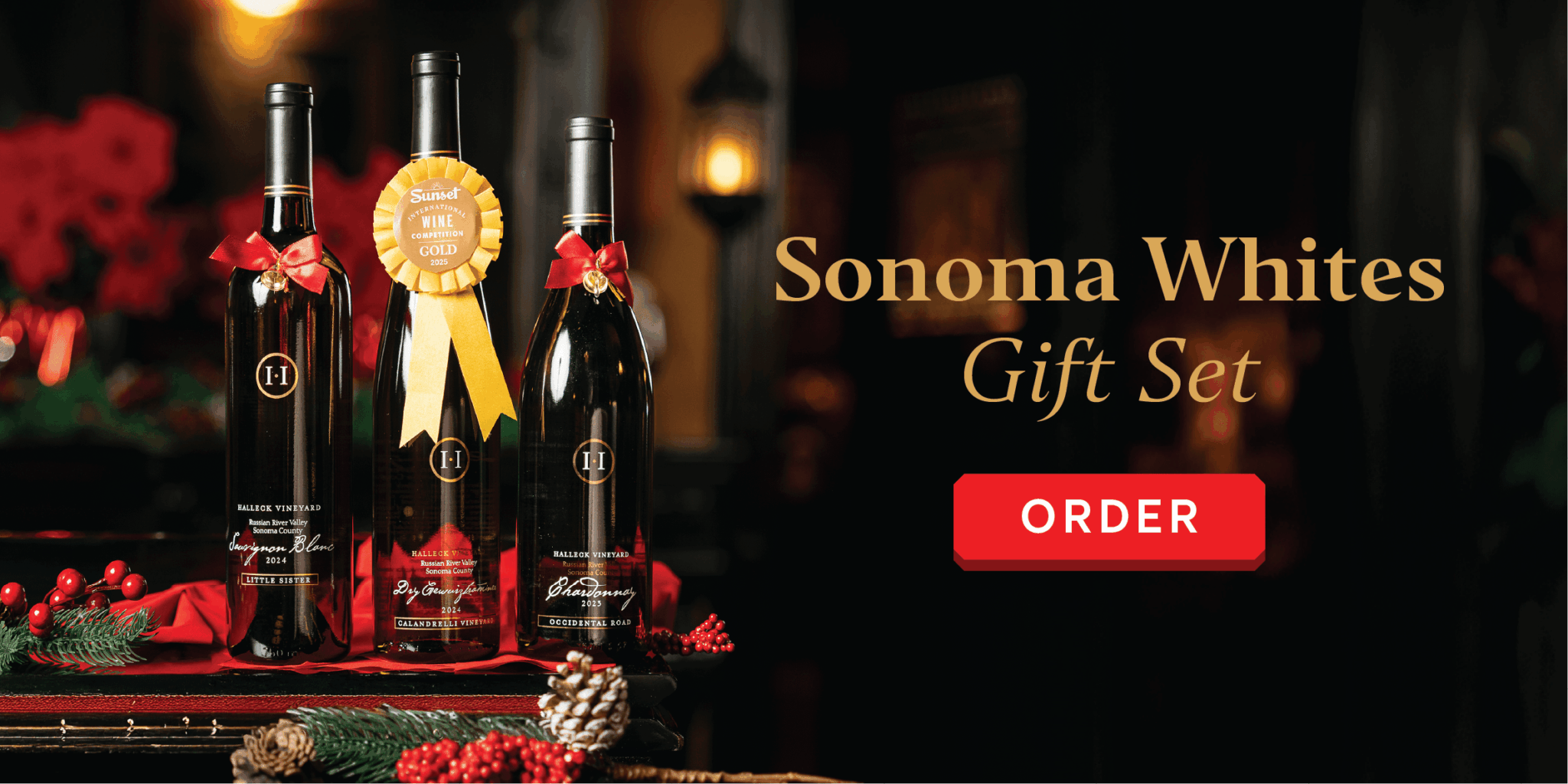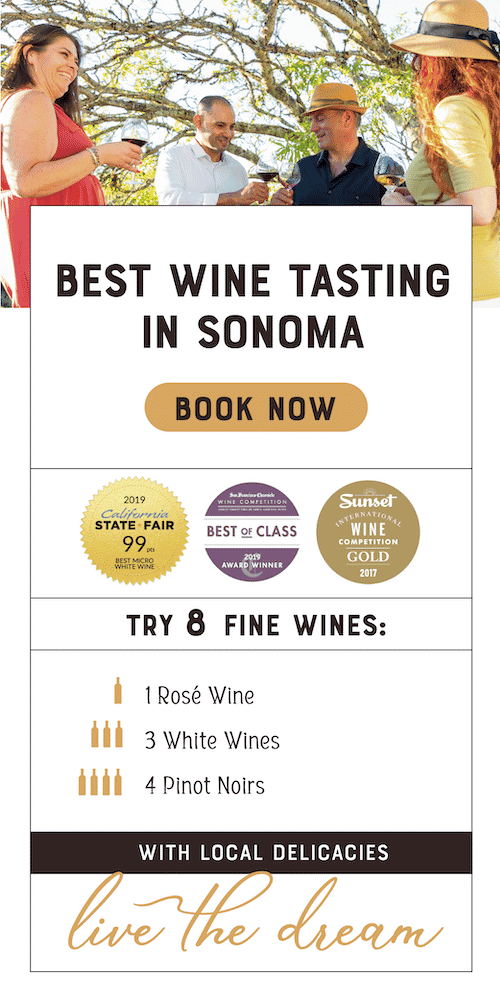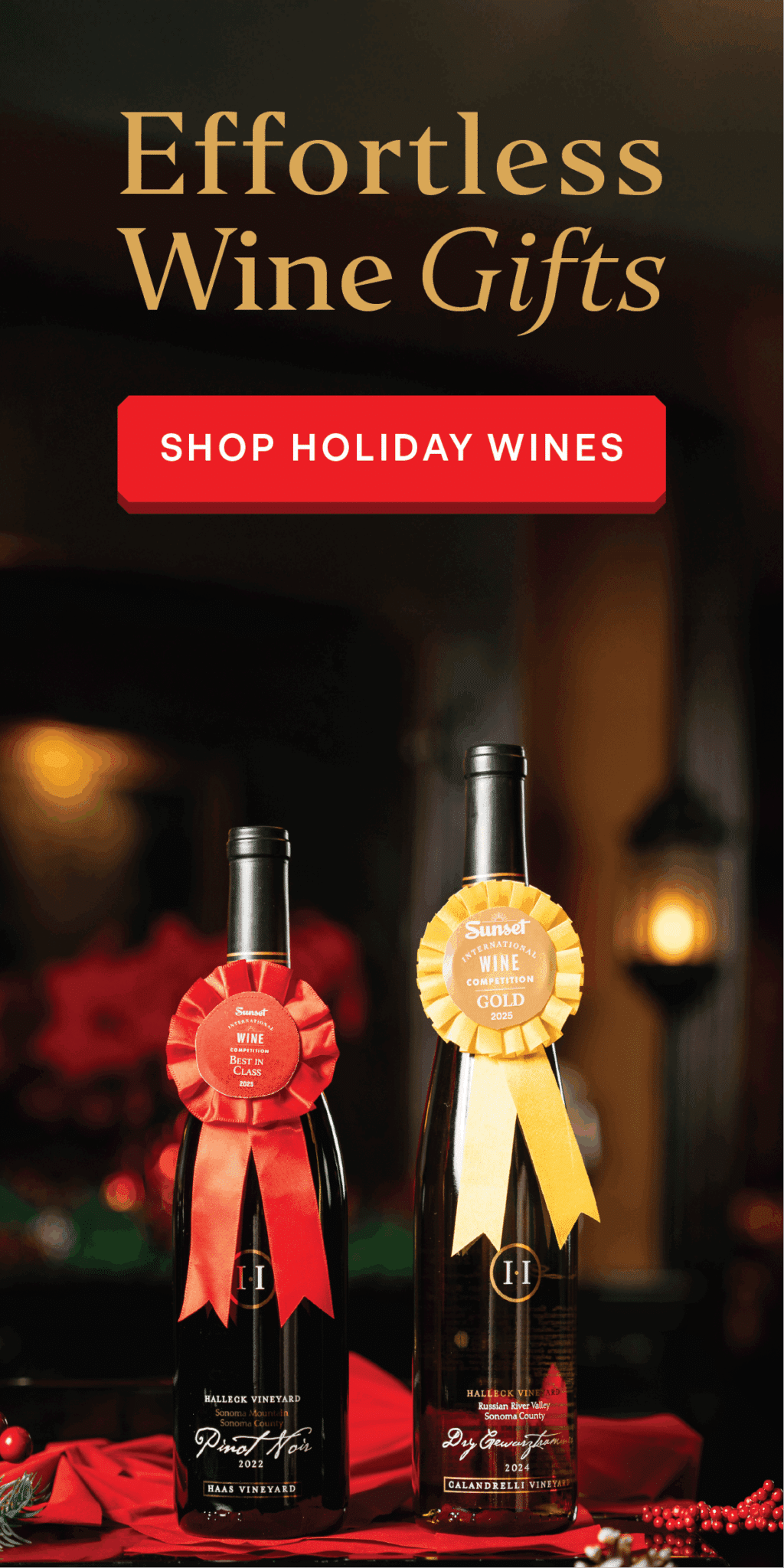Best Wine for Thanksgiving: How to Choose
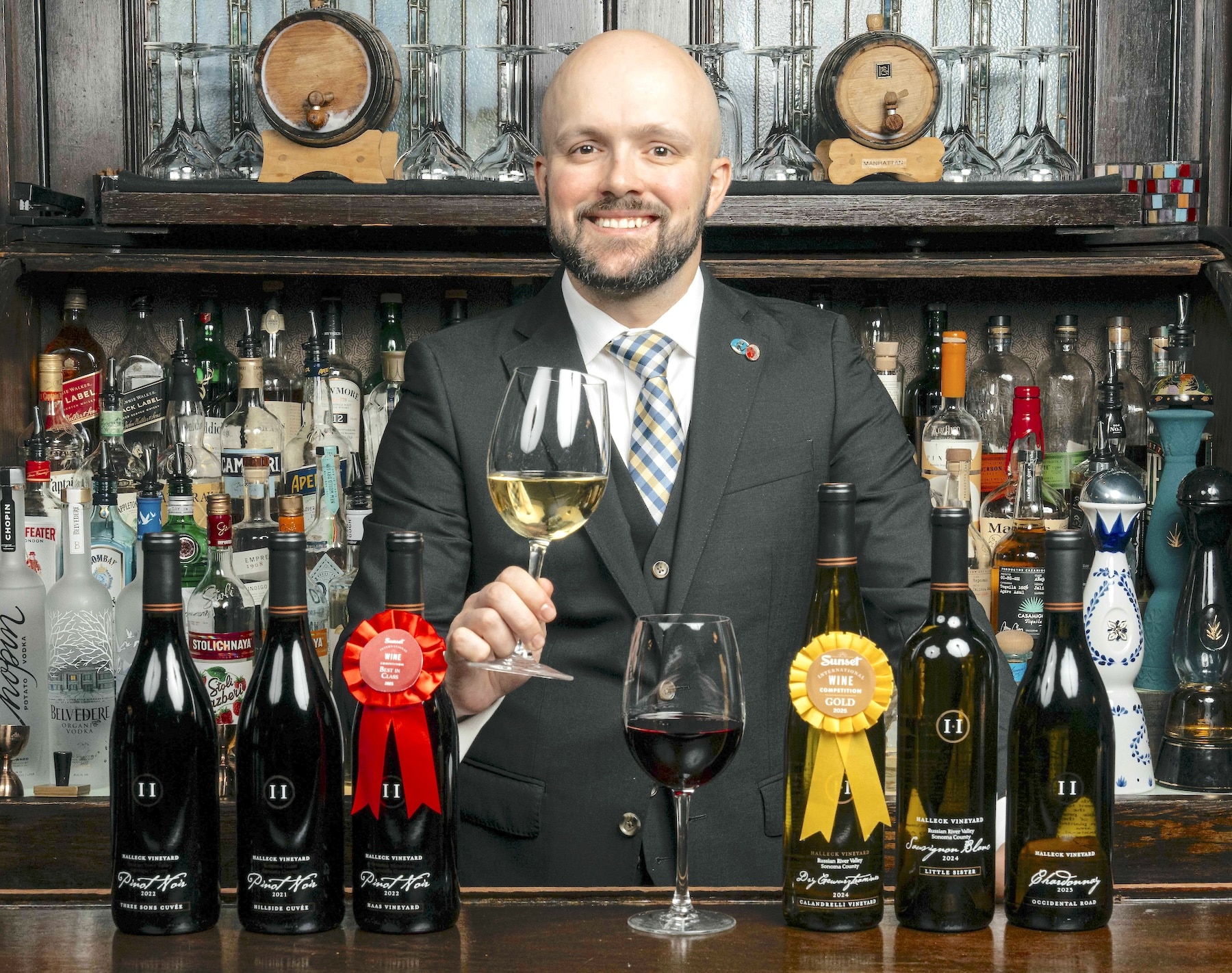
Justin Herbinet of New York’s National Arts Club shares his philosophy for pairing wines with Thanksgiving dinner — and reminds us that gratitude pairs best with the bottles you already love.
The dining room at the National Arts Club glows with the amber light of late afternoon. Stemware catches the sun from Gramercy Park as Justin Herbinet circles a table, pouring a ruby-red Gamay into half-filled glasses. The air smells faintly of roasted beets and wood polish. “You don’t need the most expensive bottle on the table,” he says quietly, “you just need one that makes sense.”
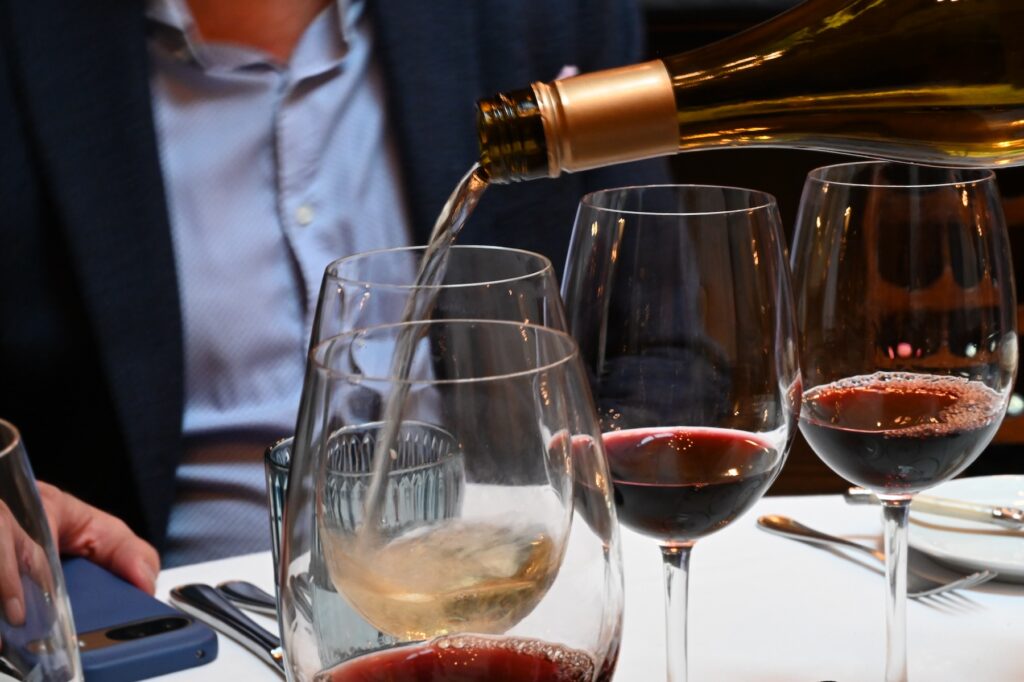
Herbinet is the club’s sommelier, and the kind of person who can talk about wine with reverence but without pretense. He grew up in Paris, the son of a family from Beaujolais, where his uncle still makes Moulin-à-Vent — a structured, age-worthy Gamay that defies the grape’s cheerful reputation. His path wound through hospitality jobs and private clubs before bringing him to the National Arts Club, where the rooms are as ornate as the wines on his list.
This Thanksgiving, as people wonder which bottle might please everyone at the table, Herbinet’s advice is both practical and freeing. “The point isn’t to impress anyone,” he says. “The point is to celebrate. Drink what you like — but understand why you like it.”
Start With Acidity, Not Price → Choose High-Acidity Whites for Thanksgiving Dinner
For Herbinet, the first rule of Thanksgiving wine is balance. “Acidity is your friend,” he says. “Turkey, gravy, stuffing — they’re rich. A good wine should clean the palate, not weigh it down.”
That’s why he leans toward white wines with lift and aroma: dry Riesling, Gewürztraminer, or even a aromatic Torrontés. These wines mirror cranberry sauce — tart, bright, a counterpoint to the heaviness on the plate.
If the turkey runs dry, as he jokes it often does, “that’s when a Chardonnay can save the day.” The butter and weight in a well-made Chardonnay replace what’s missing in the meat.
Reds Should Behave at the Table → Pick Lighter, Food-Friendly Reds for a Thanksgiving Feast
When it comes to reds, Herbinet’s rule is simple: avoid wines that overpower the food. “Thanksgiving isn’t a steak dinner,” he says. “It’s a dozen little flavors competing for space.”
He reaches for Pinot Noir or Côtes-du-Rhône, light to medium-bodied and versatile. “They’re forgiving,” he explains. “They’ll flatter everything from roasted vegetables to dark meat.”
In California, he recommends Merlot for its round fruit and easy tannins — or a lighter Grenache for something brighter. “A good Merlot,” he says, “never fights what’s on the table.”
Don’t Chase Prestige → Don’t Overspend on Thanksgiving Wine
The biggest mistake people make, he insists, is equating price with quality. “I’ve had $600 bottles that were less interesting than $60 wines,” he says. “There are producers who spend more on marketing than winemaking.”
Look instead for under-the-radar regions: Beaujolais crus like Moulin-à-Vent or Morgon, off-beat Loire Valley reds, or small-lot California blends. “That’s where you find character,” he says. “And that’s what people remember.”
Tell a Story With the Bottle → Choose Wines With a Story to Share at Thanksgiving
Herbinet believes that what impresses guests isn’t a label, but a story. “If I open a Grand Cru Burgundy for twelve thousand dollars, people will be impressed for a minute,” he says. “But if I open a $40 Pinot Noir and tell them why I love it — how I found it, who made it, what it reminds me of — that story lasts longer than the bottle.”
Wines, he says, should carry memory: the year you got engaged, the vineyard visit that stayed with you, the uncle who smuggled a bottle home from France. “Those bottles are special because of the moments around them.”
Sip Red and White → Pour Both Red and White Wines at Thanksgiving
Thanksgiving, Herbinet insists, is not the time for restraint. “Open both,” he laughs. “You’ll drink them. Even with four people at the table, it’s a long day. Start with the white, end with the red. Let people choose. It’s a celebration.”
When in Doubt, Reach for the Rhône → When in Doubt, Bring a Rhône Blend or Pinot Noir
If you can only bring one wine, he says, make it Côtes-du-Rhône. “It’s the ultimate crowd-pleaser,” he explains. “Medium body, fruit and spice in balance, no heavy oak — it plays well with everything.”
A good Chianti or a modest Montepulciano can do the same. These wines occupy the sweet spot between generosity and restraint — flavorful enough to please everyone, graceful enough to stay in the background.
Celebrate the Little Things → Celebrate Gratitude With Every Glass
As the dining room begins to fill and glasses start to clink, Herbinet leans back against the bar. “Wine has never been better made than it is now,” he says. “We understand it more — the science, the soil, the craft. So take a step back. Appreciate what’s in the glass. Appreciate who you’re with.”
He smiles, the sound of laughter from another table echoing through the room. “You’ll always have more special bottles than special occasions,” he says. “So start opening them. That’s what gratitude tastes like.”
Thanksgiving Wine Cheat Sheet
- Dry Riesling (Germany or Alsace) – bright acidity, great with turkey and spicy sides.
- Gewürztraminer (Alsace) – aromatic and slightly off-dry; complements cranberry and sweet potatoes.
- Chardonnay (California or Burgundy) – buttery texture for gravies and roasted vegetables.
- Pinot Noir (Oregon, Burgundy, Sonoma Coast) – soft tannins, red fruit, classic pairing.
- Côtes-du-Rhône (France) – medium body, fruit and spice in harmony.
- Merlot (California) – round, fruit-forward, versatile.
- Beaujolais Cru (Moulin-à-Vent, Morgon) – lively Gamay bridging red and white drinkers.
